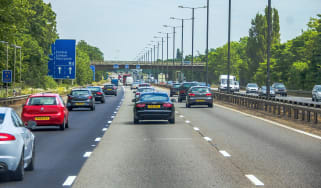Speed limits in the UK: everything you need to know
We explain the law surrounding motorway, urban, and single and dual carriageway speed limits
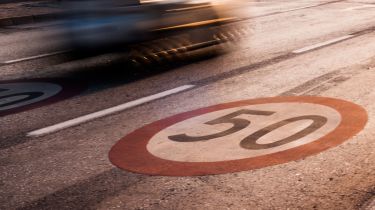
Every public road in the UK has a legally enforced speed limit that all drivers must obey, but the exact limit might not always be clear. Speed restrictions vary for different types of roads, different locations, as well as different categories of vehicles, so it’s important to have a good understanding of the law before driving somewhere unfamiliar.
Although we tend to learn the speed limits on our regular routes, drivers must be aware that these limits are subject to change. For example, 20mph speed limits are becoming increasingly common in urban areas across the UK, so drivers should always pay attention to road signs to avoid breaking the law by mistake.
 Speeding fines UK 2024: how much will I have to pay?
Speeding fines UK 2024: how much will I have to pay?
Variable speed limits complicate matters for drivers who want to stay on the right side of the law, especially when smart motorways may apply both an advisory speed or a limited speed in an attempt to improve safety or reduce traffic congestion further along the road.
With all these different limits to bear in mind, it can become hard to keep up with them all and where they apply. Our guide will help you understand them better and brush up on a few speed limits you may have forgotten.
Speed limit signs: what do they mean?
Every driver in the UK should be familiar with the round speed limit sign. It’s circular, with a white background, red border and a black number in the centre. Typically, this sign will be used to signify a 20, 30, 40, 50 or 60mph speed limit. A road sign with a red border typically indicates a prohibitive instruction – in this case, you are prohibited from exceeding the posted maximum speed.
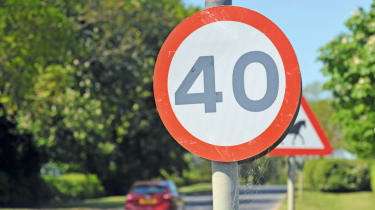
The national speed limit sign is different. This is a white circular sign with a black stripe running diagonally from the top right to the bottom left. This signifies that you can drive at the national speed limit for that type of road. On single-track roads and single-carriageway roads the speed limit is 60mph, but on dual carriageways (roads with a barrier or a divider of some sort separating the traffic flowing in opposite directions) it’s 70mph. Note that roads with two lanes of traffic flowing in either direction but only separated by double white lines or a painted hatched central divider should be treated as single-carriageway roads with a 60mph speed limit.
A blue circular sign with a white number in the centre indicates a minimum legal speed limit. These aren’t very common but can be found at some tunnels and bridges where it is important to maintain a steady flow of traffic. The same sign but with a red diagonal stripe across it signifies the end of a minimum speed limit zone.
Flashing LED dot matrix signs can be found on motorways or roads with overhead gantries, but there are two types to be aware of. If the flashing sign is round and surrounded by a red border, it should be treated the same as the prohibitive type of sign described above – they indicate an enforceable maximum and change according to weather and traffic conditions.
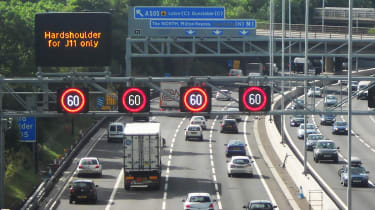
The ones that flash in white or yellow accompanied by flashing lights by their side are advisory limits. That’s not to say that you shouldn’t heed the advisory limit – there may be a queue of traffic up ahead or workers in the road for example, but they’re not enforceable speed limits per se.
Are there different limits for different vehicles?
The vast majority of road signs you come across are aimed at drivers of standard cars, but there are separate speed restrictions that apply to other vehicles, such as vans, HGVs and buses, as well as cars towing a trailer.
The speed limits for these vehicles are typically lower than the signed limit for standard cars. To make matters more confusing, there are regional variations between England, Scotland and Wales for these limits, so drivers must familiarise themselves with the law before driving somewhere new. We have outlined these speed limits below.
Current UK speed limits by road and vehicle type
Below are the UK national speed limits as they currently stand. We've listed each type of vehicle class and the maximum speeds permitted on each type of road for that class. The national speed limit applies when no other speed limit sign is shown. If a speed limit sign is displayed, this takes priority over the national speed limit.
Speed limits for cars, motorbikes, and car-derived vans weighing up to two tonnes fully laden:
- Restricted road: 30mph (20mph in Wales)
- Single carriageway: 60mph
- Dual carriageway: 70mph
- Motorway: 70mph
UK speed limits for a car* with a trailer:
- Restricted road: 30mph (20mph in Wales)
- Single carriageway: 50mph
- Dual carriageway: 60mph
- Motorway: 60mph
(*Including motorbikes towing a trailer, or vans towing a trailer)
UK speed limits for buses, coaches and minibuses up to 12 metres long and goods vehicles weighing up to 7.5 tonnes:
- Restricted road: 30mph (20mph in Wales)
- Single carriageway: 50mph
- Dual carriageway: 60mph
- Motorway: 70mph
UK speed limits for goods vehicles more than 7.5 tonnes:
- Restricted road: 30mph (20mph in Wales)
- Single carriageway: 50mph (40mph in Scotland and Northern Ireland)
- Dual carriageway: 60mph (50mph in Scotland and Northern Ireland)
- Motorway: 60mph
Van speed limits
Van speed limits are slightly more complicated. Many mid-size and large vans and commercially used pickups must obey the following speed limits:
- Restricted road: 30mph (20mph in Wales)
- Single carriageway: 50mph
- Dual carriageway: 60mph
- Motorway: 70mph
The above speed limits apply for large vans such as the Ford Transit and Mercedes Sprinter weighing 3.5 tonnes. It also includes mid-size vans such as the Ford Transit Custom and Vauxhall Vivaro. Commercially used single-cab pickups and pickups that weigh more than 2,040kg must also obey the same speed limits.
There are certain vans and pickups that can travel at the same speed as cars on all roads. These include car-derived vans that are classed on their V5C as a ‘CDV’, such as the Ford Fiesta van, Fiat Fiorino or even the slightly larger Citroen Berlingo. Also exempt are camper vans that are classed on their V5C as a ‘motor caravan’, double-cab vans and combi vans with an extra row of seats, and pickup trucks that are designed for dual-purpose use.
What are restricted roads?
A restricted road is one that offers access to those that live or have the right to travel in order to reach a destination along the restricted road – this could be to stay at a hotel or for work purposes – and they can be difficult to determine a speed limit for. If unsure and there is no signage then you should continue your journey assuming a 30mph limit (20mph in Wales) unless otherwise specified. Another trick to spot you’re on a restricted road is whether the lamp posts are 200 yards apart or less.
Dual carriageways and motorways
The speed limit for motorways and dual carriageways is always 70mph unless clearly signed, either with a round sign or on an overhead gantry. If you’re in any doubt as to whether you’re on a motorway or a dual carriageway look at the signs for directions, or those counting down for junctions – if you’re on a motorway they will be blue rather than having the green backgrounds on dual carriageways or A roads.
As mentioned in the section on speed limit signs, dual carriageways are those roads that have a divider between traffic moving in opposite directions, either a grass verge or something more substantial such as Armco. More often than not they will have two or more lanes of traffic in either direction, but this doesn’t have to be the case – you can have a dual carriageway with one lane of traffic in either direction.
Are there any other speed limits I should know about?
Increasingly, local authorities in urban areas are reducing the speed limit in built-up areas to 20mph. Some authorities, particularly in major conurbations such as London, have a blanket 20mph speed limit on all roads, while others will use the 20mph limit only on residential streets or around schools and hospitals.
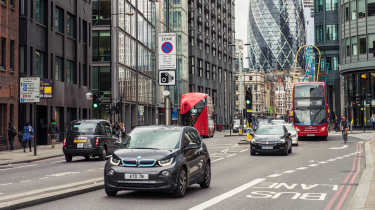
From 2nd March 2020, the speed limit on all roads in central London inside the Congestion Charge Zone was reduced from 30mph to 20mph. Transport for London continues to expand the 20mph restriction to wider parts of London, so drivers should remain alert to new speed limit signs.
Speed limits in Wales
In September 2023, the national speed limit for restricted roads was reduced from 30mph to 20mph across all of Wales. As of 2024, the rest of the UK retains the 30mph national limit for restricted roads, so drivers should be aware of the lower limit when driving in Wales.
Not every restricted road in Wales changed to 20mph with the new national speed limit – there are some exceptions where the restriction remains at 30mph. In these cases, a 30mph speed limit sign will be displayed. The speed limit for dual-carriageways and motorways remains in line with the rest of the UK.
Speed limits in Scotland
The speed limits in Scotland are almost the same for most road users as the rest of the UK. Some roads in urban areas will be marked as 20mph, all others without speed limit signs will be 30mph.
It’s only drivers of goods vehicles more than 7.5 tonnes that need to be especially aware of their speed. They must not exceed 40mph on single carriageways or 50mph on dual carriageways, whereas the rest of the UK is restricted to 50mph and 60mph respectively.
Speed limits in Northern Ireland
Northern Ireland’s speed limits are almost identical to the ones used throughout the mainland UK. The only exception applies to drivers of goods vehicles with laden weights that exceed 7.5 tonnes. As is the case in Scotland, they’re limited to 40mph on single carriageways and 50mph on dual carriageways.
Speed limiters – do any vehicles have them?
While different classes of vehicle have different speed limits, some commercial vehicles are legally required to have a speed limiter fitted. For buses, coaches and minibuses this is 62mph, for HGVs this is 53 or 56mph, while moped riders are stuck at 28mph.
Some cars are also equipped with speed limiters. In many cases, though, the limit is still far in excess of the UK’s speed limit restrictions. For example, many BMW, Audi and Mercedes models have electronically limited top speeds of 155mph, and all Volvo cars are now restricted to 112mph.
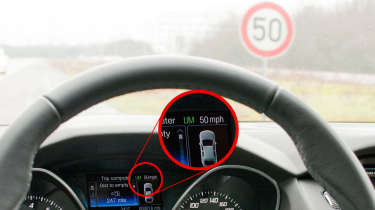
In 2022, the EU passed a law mandating the fitment of ‘intelligent speed limiters’ to all new cars sold within the EU. These systems use GPS data and on-board cameras to determine a road’s speed limit, and warn the driver if they exceed it. Some systems will even slow the car down to the legal speed limit automatically. The driver is able to turn off the system, but it will automatically reactivate every time the car is turned on.
Despite no longer being a member of the EU, the UK will adopt the same law from July 2024, applying to all new cars sold on our shores.
UK speed limit history
Cars were governed by the same laws as self-propelled locomotives (or traction engines as we’d probably refer to them today) when they first started appearing in the late 19th century. Their speed was restricted to 10mph by an 1860 law, so as not to cause a danger to other road users – mainly pedestrians and horse-drawn carriages. However, this was reduced by the Red Flag Act of 1865 to 4mph in the countryside and 2mph in towns. The new-fangled ‘horseless carriages’ had to have a person walking 50 yards ahead to warn other road users that a car was approaching.
By 1896 this law was repealed and the speed limit was raised to 14mph, while the pedestrian in front of the vehicle was no longer required. The limit was upped again in 1903 to a heady 20mph but it was widely ignored, as cars became more commonplace, that in 1931 the speed limit was dropped altogether.
The 30mph limit we’re so familiar with today was introduced in 1943 on a trial basis in built-up areas – defined as anywhere with street lights – by Minister of Transport Leslie Hore-Belisha (of beacon fame) and it became mandatory in 1956. Two years later the limit was raised in some areas – to 40mph – to increase traffic flow.
The 1960s saw more limits being introduced, including a 20mph advisory limit when driving in fog, and, in 1967, a 70mph motorway limit and a 60mph limit for single-carriageway roads outside urban areas. The limits have remained more or less the same since, although the fuel crisis of 1973 did see the introduction of a 50mph limit, which was dropped again in 1977.
UK speeding penalties
We have a comprehensive guide to speeding penalties in the UK which covers everything you need to know.
Generally, drivers caught speeding will receive a Fixed Penalty Notice (FPN) and a number of penalty points on their licence. The size of the fine is dependent on the severity of the offence, and the offender’s weekly income, with a minimum fine of £100. Offenders will also receive a minimum of three penalty points. In some cases, you could be offered a speed awareness course instead of an FPN and licence points.
If you earn more than six penalty points within 24 months of passing your test, your licence will be revoked and you'll have to go through the whole driving test again.
Read our guide to average speed cameras to make sure you don’t accidentally exceed the speed limit…
Recommended
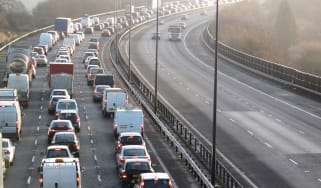
Beat the Easter weekend traffic: secrets of a stress-free car getaway

Classic car tax exemption: which historic vehicles qualify?
Most Popular
Tips & advice

Car dashboard warning lights: what does each symbol mean?

Electric car charging stations: public networks, charger types, apps and maps


